#era: 1980s
Explore tagged Tumblr posts
Text
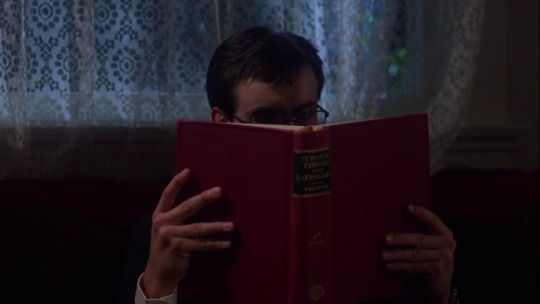

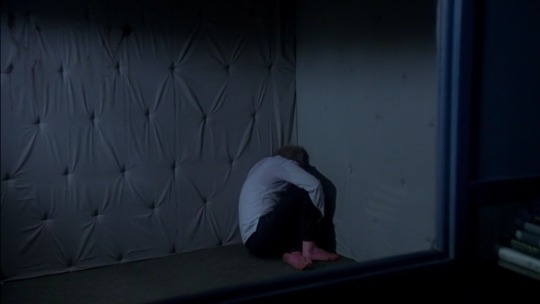
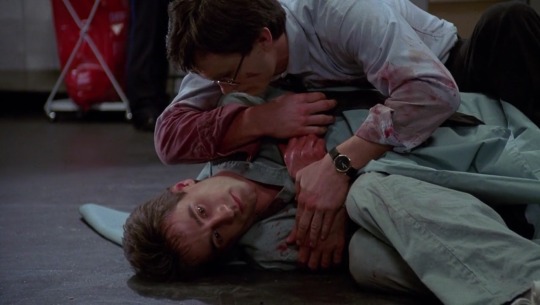
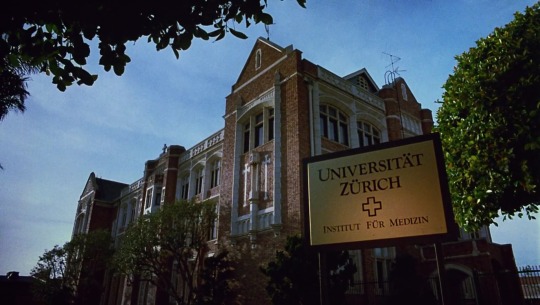
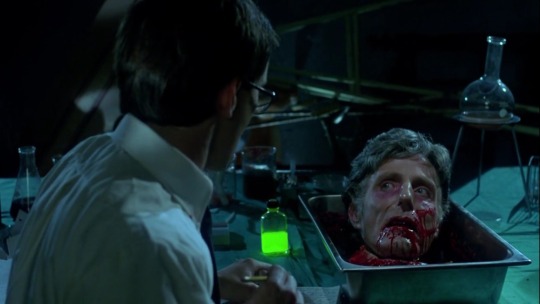
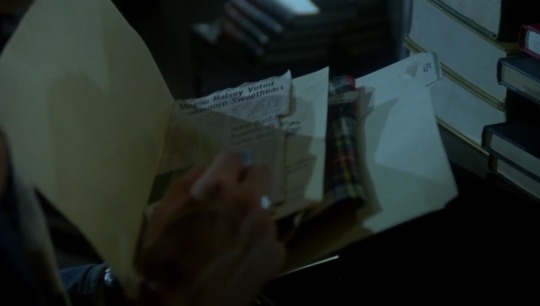
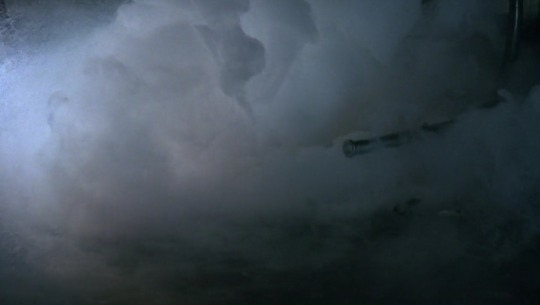

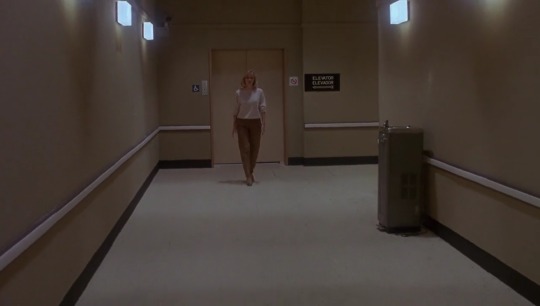
ten frames.
re-animator (1985) — dir. stuart gordon
vfg31 horror film challenge: day 30 · free watch
#re animator#reanimator#movie log#october 2023 watch#10 frames#vfg31#genre: horror#genre: scifi#era: 1980s#country: usa#film screencaps
157 notes
·
View notes
Text
No. 55 - Finnair [+ Centenary Livery]
So I know I'm in the process of writing a bunch of longer posts and thus haven't posted in absolutely forever, but I had to let something cut the line very quickly because in this case it was somewhat time-sensitive. I've missed the actual date by two months, but if I get in a post while it's still 2023 (...in my timezone, at least, so sorry to actual Finns busy enjoying 2024) I think that counts, and this entire blog is about what I think, so that means it counts.
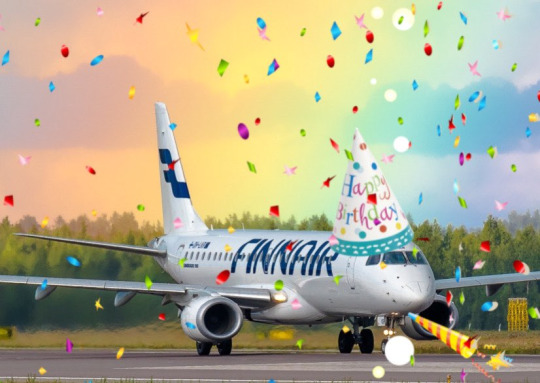
On 1 November 2023 Finnair became the sixth airline to turn 100 years old, consistent with its status as the sixth oldest airline in continuous operation. I wish I'd started this blog earlier in the year, or prioritized differently, because Aeroflot and Czech Airlines also turned 100 in 2023, but...well, I didn't. You'll probably see them both in 2024 instead. Finnair, however, was requested by @kuivamustekala - particularly their centenary liveries. Requested a long time ago, even. So I'm going to hope that late is better than never and throw Finnair one last birthday party to wrap up 2023 by looking at where they started, where they are now, and what they've been doing to celebrate.
1923: PROTO-FINNAIR
Finnair, obviously the flag carrier of Finland, was founded in 1923, but its first service was in early 2024, using a Junkers J.13 (fitted with obligatory floats, as there were no suitable airstrips in Finland at the time).
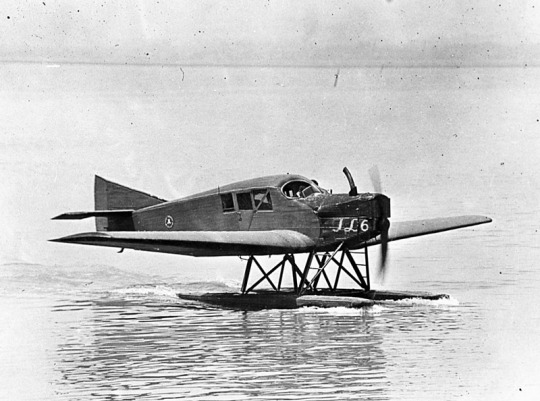
image: Joseph Eaton via US Navy National Museum of Naval Aviation This is actually the US license-built version, the Junkers-Larsen JL-6, but I couldn't find any pictures of actual J.13s on floats.
Unfortunately, Finnair was founded under the name 'Aero', which is probably the actual single worst name for an airline I have ever heard. We can jest and joke about things like Jet2 and Fly Air, but I sincerely do not think I have ever seen anything with worse SEO than an airline named 'Aero'. Even for 1923 this was fairly dire - back then, as for much of history, airlines were generally named for the area they served. Aero may have been a private company, rather than state-owned, but that didn't mean they couldn't name themselves for the area they served - private airlines have always done this and still do. Incredibly enough, there was a second 'Aero' founded in Poland in 1925, but that was quickly merged into what would become LOT Polish Airlines, shedding the name like a chrysalis.
Bafflingly, even when the Finnish government bought the airline in 1946 (they still own a majority share of it today) they didn't bother to change the name. They did begin writing 'Finnish Airlines[1]' on the fuselages, but as far as I can tell this appears to have been more of a stylistic flourish of sorts than an actual rebrand, or maybe even a clarifying subtitle on the very nonspecific name. In 1953 they began marketing under the much catchier 'Finnair', but the company remained legally named 'Aero' until literally 1968 and the fuselages still read 'Finnish Airlines'.
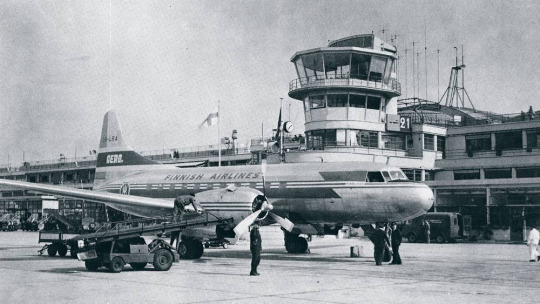
image: Finnair An Aero/Finnish Airlines Convair 340, photographed in 1953 in a livery which included both the large 'Finnish Airlines' wordmark and 'Aero' on the tail.
Early Finnair, like most early airlines, didn't have a particularly standardized livery for its fleet, and even where it did it's not very well documented. Finnair unfortunately has some of the poorest documentation for livery evolution of any large airline I've discussed so far, which really surprised me. That said, it's when the name became Finnair that things begin to be easier to find, and so that's where I'll begin.
1968: CLASSIC FINNAIR

This original logo[2], introduced in 1968, was designed by Kyösti Varis - at least, that's what every logo database I looked in said. I actually couldn't find either Finnair or Varis confirming this[3], but I still think it's probably true. Unlike designers like Vic Warren and Lindon Leader, who wrote and gave interviews about their designs for major airlines, Varis appears to have other preoccupations. He is enormously successful and prolific, to the point where his website doesn't even mention Finnair. According to the timeline he provides he would have either been creating this logo freelance or in his very last days at Advertising Agency SEK (probably the latter, since they did the two subsequent iterations), and based on his history as a typographer I think it's safe to say the letterforms are his creation as well. Also according to his timeline, he is younger than Finnair! And we almost have the same birthday.
I like the original Finnair branding. It's not ostentatious, but it's nice and sleek, with that forward slant I love in airline branding and a long unbroken line (both in the 'F' logo and in the even heights of the letters in the wordmark). It looks aerodynamic and the rounded, blocky letters have a hint of that 60s futurism while not being gimmicky. It's kind of incredible looking at it next to the '91-'94 FedEx wordmark, which occupies the opposite end of the sliding quality scale of TRON-looking text. The design as a whole is simple enough to easily reproduce but distinct enough to easily recognize. The shade of blue chosen is a fair bit lighter than the blue of the Finnish flag, but visually pleasing enough. They basically keep iterating on this general concept for the rest of their history, which I think is fantastic - no need to get rid of something that's working for you. It's nice to see an airline not feel pressured to reinvent its logo and livery every 20 years. That's about it for the logo[4] - what about the livery?
As mentioned prior, Finnair's liveries, before quite recently, were very poorly documented. Variants definitely existed between different types and different periods in the company's history, but the broad strokes of the branding seem to have remained almost startlingly intact for around thirty years.
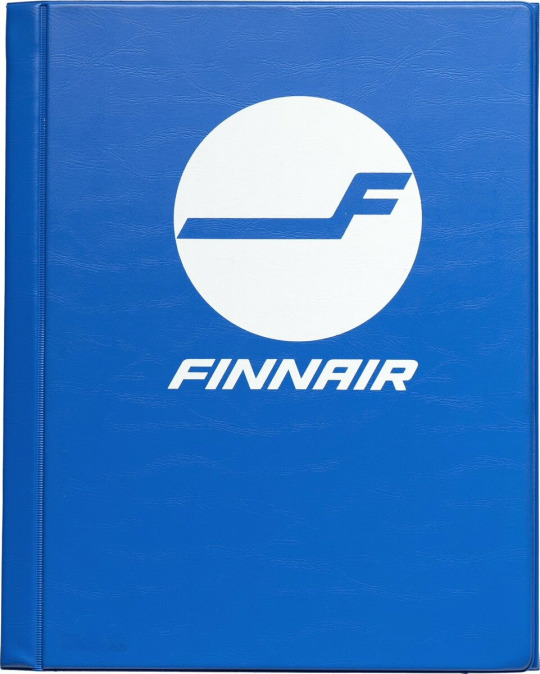
image: Letterform Archive The cover of a style guide from 1985. If it's changed from the 1968 original, I can't tell how.
But I'm really here to talk about one thing: the liveries.
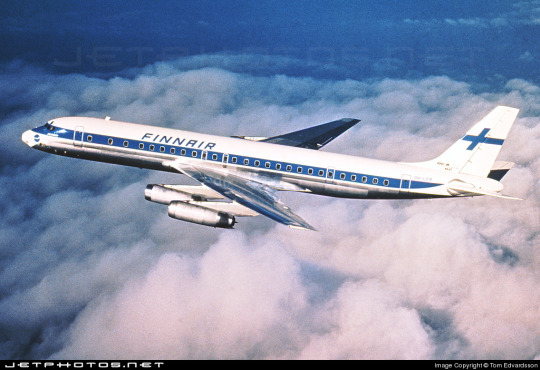
The above image was from Finnair's own archive and was taken in 1968[5], making it contemporary with the introduction of the Kyösti Varis branding, as well as lining it up with the 1969 addition of DC-8s, like the pictured airframe.
For the majority of Finnair's history, their livery is always going to look something a little bit like this. Primarily white, with a thick blue cheatline (in what I call the domino-mask style, where it's vertically centered around the cockpit windows) that lightly flips up at the very end and a blue cross on the tail to represent the Finnish flag.
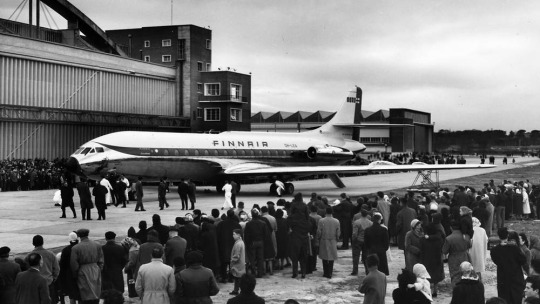
Finnair says this image is from 1960. If so, the livery was already well on its way to existing prior to 1968, with my guess being that it was introduced in 1960, along with the first jets in Finnair's fleet - the pictured Sud Aviation Caravelle, which pioneered the swept-wing, aft-engine format later seen on immensely popular jets like the DC-9 and Tu-134 - the latter of which was commissioned specifically because Nikita Khrushchev was so impressed with the Caravelle's aft engines and the quiet cabin experience they provided. It's a plane with a lot of unique visual features, featuring a nose that looks almost slanted downwards (a copy of the de Havilland Comet nose), a cruciform tail (instead of the more efficient T-tail used for future rear-engined designs), and triangular passenger windows. Most crucially, though, it was more or less the first short-range jet on the market. This made it perfect for an airline like Finnair, which at this point didn't really go that far from actual Finland.
This 1960 photograph provides a very strong blueprint for what was to come. It's the first iteration of the livery to say 'Finnair' instead of 'Finnish Airlines', and it's introduced a modern-for-1960 single-rule cheatline, although this early version was flipped horizontally, curling up at the front to frame the cockpit windows instead. (I think the white paint also cuts off behind it, leaving the space in-between the cheatline and painted nose blank metal, but in black-and-white it's somewhat hard to tell.) I do think I prefer the modern version. The use of the white downward curve with no blue hemming it in creates a really nice effect where it blends with the unpainted metal underside, due to the metal being right where you would expect to see a shadow anyway. (This effect is why I'm not quite sure where the paint ends on the Caravelle, and am just guessing based on which parts are noticeably reflective.) I definitely prefer the change made to the tail, where the single line of trim at the end of the rudder was replaced with a white canvas for the Finnish flag.
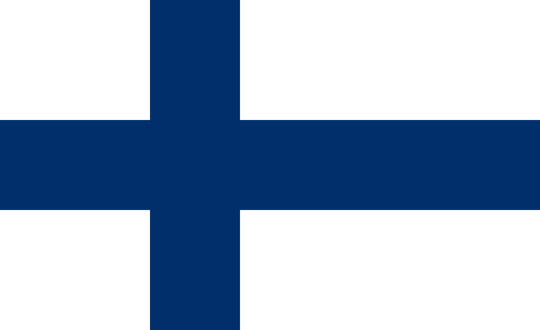
While I do tend to have a slightly pessimistic outlook on primarily-white liveries, I will say that if you're going to have a primarily white plane, and you are the flag carrier of Finland, this is a fairly understated and stylish way of incorporating it. While I probably would have done it on the main body, over where the first set of doors is, instead of on the tail, I think this is far from the end of the world. What they have is a nice, elegant taper where the tip seems to point directly at the tailplane, and it looks neat and intentional. A lot of airlines tend to just awkwardly slap a logo on their tail, which often looks really sloppy due to poor alignment or even just out-of-place entirely, and Finnair avoids that while keeping the tail from being completely blank. Having an element on the tail that's more horizontal than vertical, like the old 'AERO' rectangle or the tail rectangle on the one decent livery Lufthansa ever had.
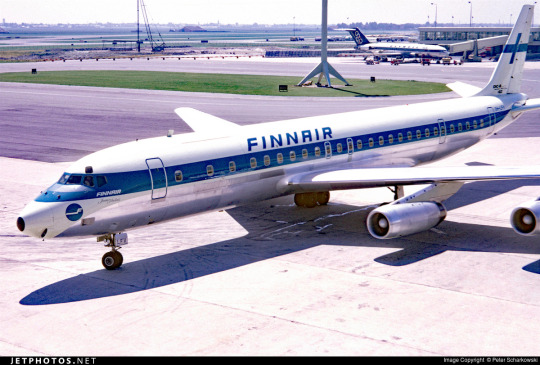
If you look in the background, you can see that wow has the Olympic Air livery looked like that for a long time! But that's a story for soon.
Additionally, some details were added on the nose. You can see on this DC-8, photographed in 1969, that the nose features an e-girl cheek stamp of the Kyösti Varis logo. Next to it is the name of the aircraft - in this case, Jean Sibelius - in really difficult-to-read thin text. (Finnair unfortunately appears to have stopped naming their planes by the late 1970s, but at one point they would frequently be named for Finnish people and places.) The 'domino mask' goes quite a bit beyond the cockpit windows to create a wider line from the side. I wish that the logo could have been integrated some other way, because the extra little blue thing just looks cluttered, but I can't imagine how they would do it without just replacing the cheatline. I mean, that would have been an option - indeed, it's what I would have done[6] - but assuming that they keep this general look I think the logo just can't fit in on the livery. The engine nacelles, maybe? Though that would still present issues on the Caravelle, where the engines are directly over the cheatlines. I also wish they would have made it a bit easier read the name, because I like to know what the plane's name is - thankfully, some later paint jobs actually do this before, tragically, Finnair stops writing names on their planes at all.
I believe this to be the strongest iteration of the classic Finnair livery, and it was pretty obviously optimized for the DC-8. Modern airlines tend to not bother adjusting their liveries between types, creating some absolute travesties of proportion, but Finnair boldly went in the opposite direction by modifying it for each airframe and yet still having it look worse.

The sharpest deviation arises in the CV-440 version of the livery. This image is from 1971, just two years after the DC-8 liveries would have carried their first passengers, and it's wildly different. The cheatline is lowered sharply, sitting below the cockpit windows and wrapping around to contour the body of the airplane. There's a certain je ne sais quois to the domino mask that I find myself missing here. This design also has an unnecessary second 'Finnair' added to the tail, which kind of looks awkward stacked on top of the existing cheatline besides being redundant, and the Finnish flag on the tail is somewhat awkwardly made free-floating. It feels a lot less sleek and a lot more arbitrary.
On the other side of the plane the cheatline goes down quite a bit farther than on the jet models, probably because they thought it would be a better way of negotiating the Convair's rather bulbous nose, and I actually think I prefer the wide, upturned variant. This version, if anything, is too close for my taste to the livery VARIG operated in a similar timeframe. There are a lot of differences, yes, but in the 70s having one big solid cheatline on a white body and metal underbelly was the equivalent of the Lufthansa Line, so if you toed said line, be it cheat or Lufthansa, you risked becoming easily mistakeable for any airline with too similar of a color scheme. And blue-on-white was maybe the most common color-scheme at the time.
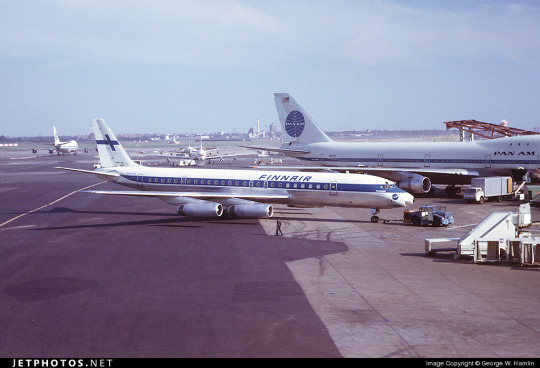
I doubt Finnair shared many tarmacs with VARIG, but here they are with Pan Am, and they could also expect to run into airlines like Sabena, Icelandair, and probably a half-dozen I've never heard of, all competing to be the one the others get mistaken for. It's a tricky position to be in.
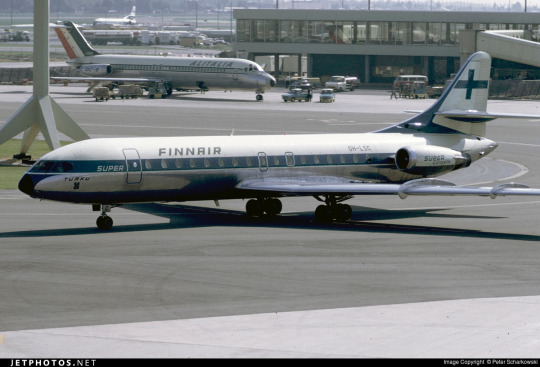
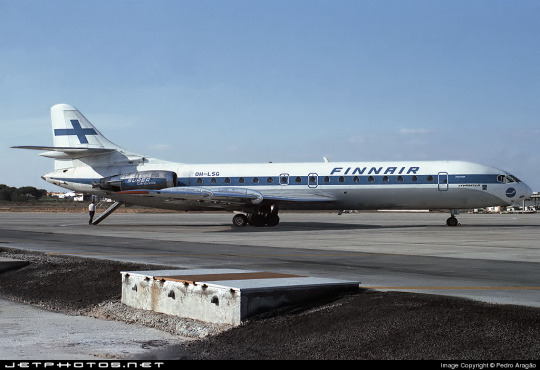
I do quite like the livery on the left, maybe even more than the DC-8 one, but I can't seem to find any other airframes painted like this. I'm not sure why this one is.
These images are from 1971 and 1969. They are both the same model of airplane - the Super Caravelle or Caravelle 10B. Their liveries are completely different. And that's just how it was back then - not even standard within the same airline, somehow still trying to stay distinct from dozens of other non-standardized blue-on-white cheatlines.
When evaluating classic Finnair, I have to keep myself tempered in both directions. When I think it's clean and well-proportioned I have to remind myself that it's just a complete nothingburger. When I think it's a lazy and cowardly non-design I have to remind myself that, no, at its best classic Finnair does look like it was designed with some thought, and it does have some traits that feel at the very least interesting enough to merit not being totally dismissed.
But...look, I have to give classic Finnair a D+. Because they tried, and they did something, sure, but it's ultimately not something especially memorable and the implementation is just spotty.
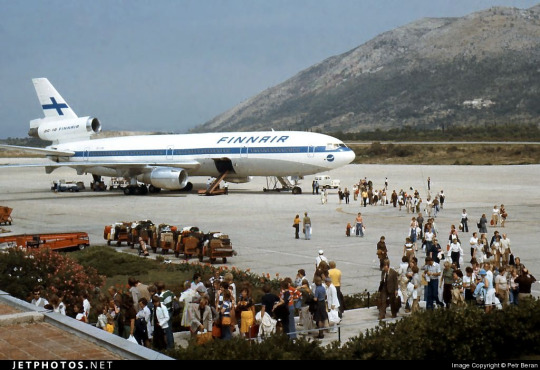
Even given a canvas like the DC-10, they fumbled. The DC-10, in my opinion, was a big test for them. And I do mean big. In the DC-10 is a plane with all the space in the world to add visual elements, and a space where just a couple lines can go from a detail to a fin that towers over anything that isn't a 747, showing off the Finnish flag as if someone had flown it from a building mast. The third engine, which I feel like a lot of airlines really struggle with on the DC-10, gets a nice horizontal line of writing that's not intrusive but helps prevent it from feeling like a giant gap. The wordmark gets larger, is moved forward, gets to really own the space it takes up instead of being squeezed in. And...they made the cheatline just....a really thin flat line that looks bad and stiff and boring. There's nothing setting them apart from Icelandair, and Icelandair's livery from this point in time was so boring that my only comment on it was that it looked like they forgot to paint the rest of the plane. You can do white planes well, but Finnair just really doesn't get there.
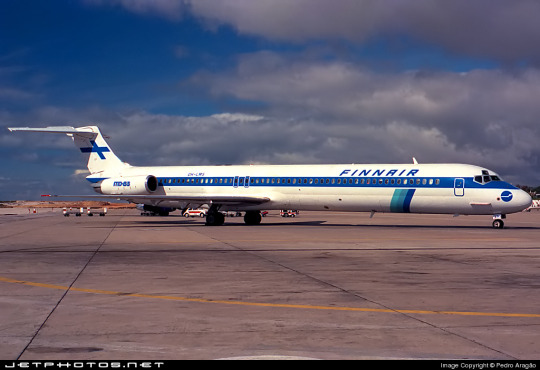
...hey, Finnair? You can't just decide to do belly stripes but worse, Finnair, you're literally next door to like two thirds of SAS and that livery was designed from the ground up. They have a couple of near-misses with SAS's toes but this is the one that makes me actually go 'is this allowed?'. It seems to have been exclusive to their late-80s MD-80 fleet, but it's just incredible to me that it ever happened. (That said, those three shades of blue are so nice together and I wish they had ever brought them back. I understand the appeal of sticking to the stark contrasted blue-on-white of the flag, but there's so much potential out there!)
1997: NEW TYPE, NEW LIVERY
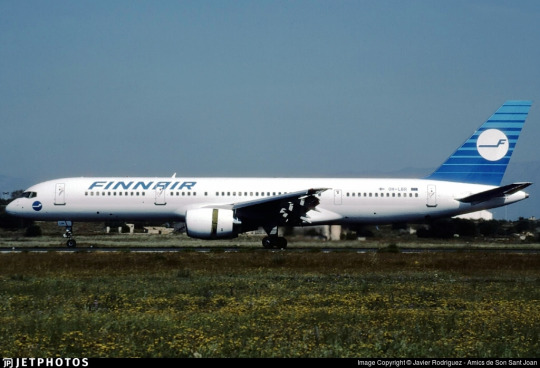
I really like the 757. It deserves a better livery than this.
Removing the cheatlines was a very trendy choice to make. This is the sad beast I call the Deltalite - a Deltalike but without the painted nacelles and belly that are usually slight redeeming factors. There's such a beautiful design on the tail that could have been put on the whole fuselage, honestly, and that's sad, but even on the most granular of levels...why keep the little cheek stamp if you have the logo visible on the tail now? Weird choice. Being so desperate to do the Deltalite thing everyone else is doing that you get rid of your country's flag on the tail is just a bad choice of priority, I think. There's not much to say about this. Honestly, I'd drop it to a D-. There's enough happening that it would lose something by being painted into Star Alliance colors, but it wouldn't lose terribly much.
2000: NEW FINNAIR

Oh, Finnair. Why? Did no airline resist the siren song of getting way too into airbrushing in the early 2000s?
Maybe I just have whatever the opposite of nostalgia is for the early 2000s, but this just makes me sad. They've made the wordmark look worse, overcomplicated the simplicity of the logo, and gone ham with the gaussian blur.
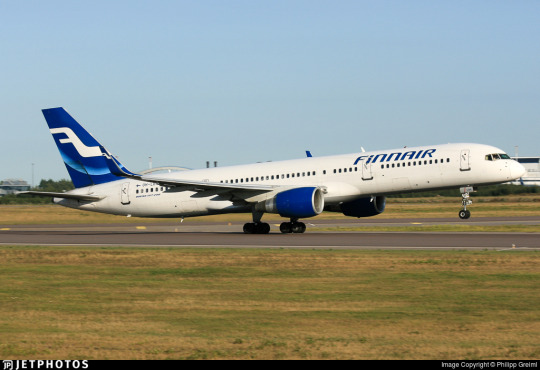
Look, it's not all that bad. The shades used on the actual plane are noticeably darker, and the colors at least don't look half bad now. And they've even bothered to paint the engines this time around! But...come on. You've changed 30 years of something that was working just fine for...this? Something which maybe climbs up to a flat D?
The 2000 brand overhaul, including the logo, was done by Finnish agency SEK & Grey. They're nearly as old as Finnair and have worked for brands as prominent as Coca-Cola and Kellogg's, but their about page puts Finnair front and center. They have an entire page describing their Finnair work.
Despite claiming to have included humanity and warmth and movement, I see none of this. I'll admit upfront I generally dislike what's dubbed 'Nordic' design. It's not the minimalism which I dislike but the banality.
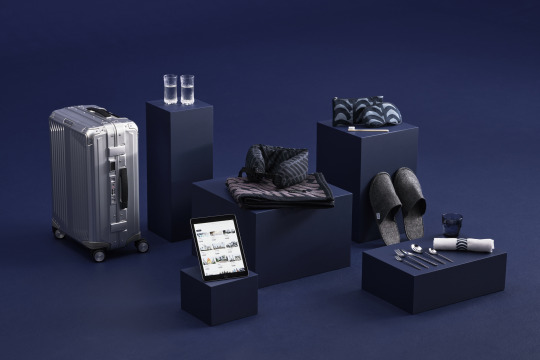
What does any of this have to do with Finnair? What here represents the history of one of the world's oldest airlines? What here really speaks to the Finnish people? Why is just designing something generic and making sure it's all crisp (when you're photographing it fresh out of the plastic, before it's been tripped over and stepped on and yanked down staircases and accidentally sat on and stained with tea) considered a substitute for designing something that people will see years down the line and get nostalgic for? I'm nostalgic as hell for Alitalia, an airline that doesn't exist anymore. I still use the bag from an amenity kit I got on Alitalia nearly ten years ago to store small essential things like toothbrushes and medication while traveling, but I wouldn't know it was Alitalia by looking at it, because it's lovely and convenient and ergonomic but it's literally just grey. It evokes nothing, and it doesn't even say 'Alitalia' on it anywhere. Nothing here could ever be considered ephemera or memorabilia. I could steal Finnair's look at the Gap.
2010: SORRY, HERE'S NEW FINNAIR FOR REAL THIS TIME

SEK & Grey gave it another shot. This one's a lot better.
I like the change in the logo, first off. And this, the word 'Finnair', is the logo, but I'm comparing it to the earlier wordmark. 2000's attempt felt like it was taking the original and just trying to sand off the corners to make it more modern, but the 2010 take on it actually shapes each glyph into a neat little space-age thing that creates this curved shape by way of a lot of straight lines, in a way that feels visually pleasing and interesting. I enjoy the square holes in the A and R, the return of the crossbar on the N, and the extreme range of widths which gives the letters a real weight to them. This isn't a typeface - these glyphs exist in the context of the word FINNAIR in this exact configuration and one of four colorways. Finnair does have a proprietary typeface, Finnair Sans, and it looks nothing like this because this is not a font, it's a logo.
I think it is a shame that this is the logo now. I really liked the F. And they haven't gotten rid of it, but it's now been relegated to an official subordinate position, according to their branding guide:
The official Finnair logo is the text version of the logo, and it is primarily used. The F emblem is used as an additional symbol.
Look, I'll always think it's a shame when your main logo is just the name of your company. Some airlines do it, and it feels like an empty space to me. It can be satisfactory but not outstanding. When you start out with a nice little symbol and then take it away, though, I do feel somewhat robbed.

It stings extra because I really like the way the new F looks. It has that long brushstrokey look and it almost makes me think of Hebrew characters. The way it tapers now really adds to the feeling of movement I get from it, and it's a great base for a livery. Now that it's darker, even though this does bring Finnair into competition with airlines like SAS, LOT, TAROM, Lufthansa, and even Ryanair when it comes to dark-blue-on-white, it also contrasts better with the main body, and it's still light enough that you can recognize it as blue. Anyway, it doesn't take a genius to know how to integrate this into a livery. Long line for the fuselage, go up to match the tail...
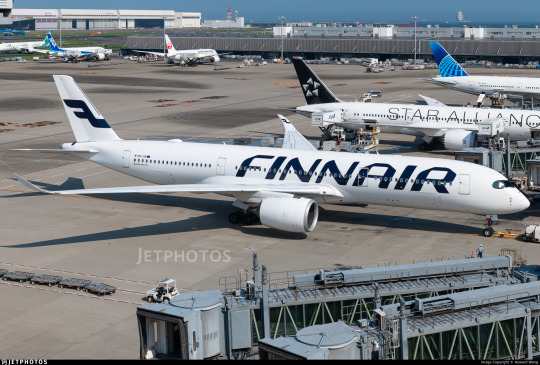
Finnair. Are you serious, Finnair?
Look! I get it! Billboards are in now, it's fine, I get it. it's probably the nicest billboard I've seen in a while, font-wise. It feels comfortable on the fuselage and it feels like it earns the space it occupies. The F is nicely centered on the tail, cuts off at a pleasant point. But...why?
I really can't be too mean about this. I want to be meaner than I actually can justify, because I think if any other airline made their plane this featureless I would hate it but Finnair's billboard livery is actually nice enough and everything is placed well enough that it's not at all unpleasant to look at. It's an acceptable livery. If maybe 25% less planes were basically all white it would shoot up in my esteem. I don't really like the fact that they put the little Fs on the inside of the wingtips of their A350s, but that's really my only nitpick. It's just sort of...bringing a really fantastic loaf of bread to a potluck when you were asked to bring baked desserts. You've done a very good job, but you didn't quite get the assignment.
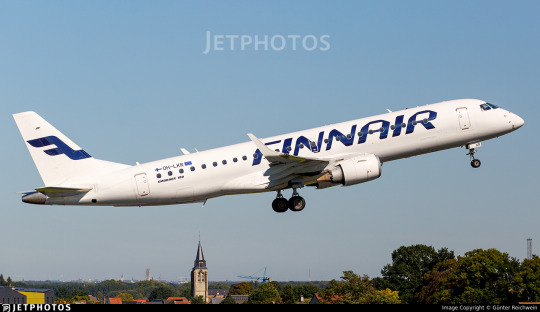
It's a bit hard to critique the modern Finnair livery in detail because I think it's executed fine. There's nothing really wrong with it except that it has a logo that could lend itself to all sorts of interesting shapes, it has 30 years of variants of a very specific design to draw on, and it's chosen to go tabula rasa just to be all clean and minimal instead of doing any of the interesting things it could have with this new start.
I want to dislike this take on the Finnair livery, but at the end of the day I just don't. I think it's completely satisfactory. A lot of airlines try to get this look and somehow end up seeming cluttered for it. Finnair is one of the only instances I can think of where a white fuselage with just a wordmark has looked okay. It isn't ugly. It hasn't failed at the thing it's trying to do, but I think that it should have tried to do something else.
At the same time, though, this is the most Finnair that Finnair has ever been. The blue cheatline and the Deltalites were stumbling over well-trod ground. The modern livery, at least, isn't sloppily tail-heavy and seemingly thoughtless.
I give modern Finnair a C. This took an excessive amount of deliberation, but it really is...good enough. It's satisfactory. It's fine! I would have taken a completely different direction, but they have done a good job with their sort of lackluster idea. It's alright. We'll check on them again in another hundred years and see where they're at.
2023: CENTENAIRY
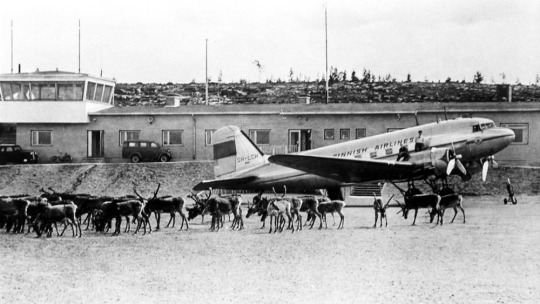
A century is a very long time. Finnair is older than my oldest grandparent. Finnair is older than over a dozen sovereign countries. Finnair is older than aerodromes in Finland. It's older than every currently operating airline except KLM, Avianca, Qantas, Aeroflot, and Czech Airlines. As of the first of November, Finnair is in triple digits.
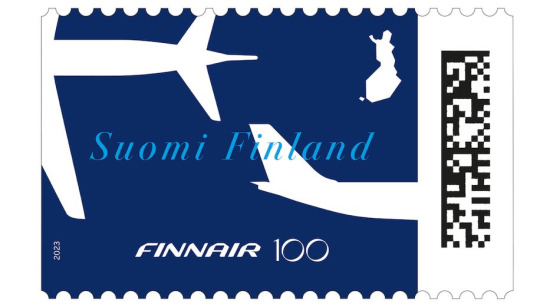
I adore this centenary stamp Finnair has put out, celebrating the long relationship between aviation and the mail. It's not complex, but it's not barren, either. It combines the dark blue of the modern livery with the light blue of the classic one, all with the white silhouettes of airplanes elegantly soaring over an outline of Finland. The outstretched white wings on the deep blue have the grace of a giant fish swimming beneath a glass-bottomed boat.
But of course it isn't just stamps. Finnair is an airline. Airlines do special liveries. Qantas and KLM both slapped a big 100 sticker on an airplane for their big anniversaries. Finnair has of course done something similar.
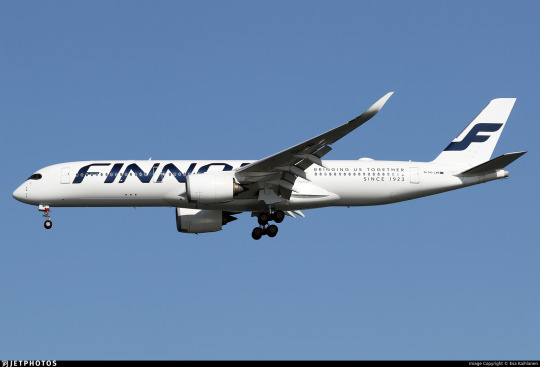
Three airframes - the pictured A350-900, OH-LWR, and two A320s - OH-LXK and OH-LXM - have had a 'bringing us together since 1923' sticker applied. Matching the rest of Finnair's branding, it's certainly quite minimal, but it's a nice gesture. It's not what people have been talking about. That's OH-LWO and OH-LWP, both A350-900s, who have been given something more substantial to wear.
youtube
I'm going to assume that after its renaissance on tumblr a few years back most people reading this are familiar with the Moomin franchise. I definitely am, because when I was in my larval stage my mother first taught me to read Russian using an omnibus book of Moomin stories. Creator Tove Jansson apparently designed both the shape of the eponymous white critters and the sound of the name Mumintrollen itself are designed to evoke a feeling of softness, and it's clear why these characters are so beloved.
It isn't the first time Finnair, which frequently collaborates with Finnish brands and highlights its Finnish roots, has featured Moomins.
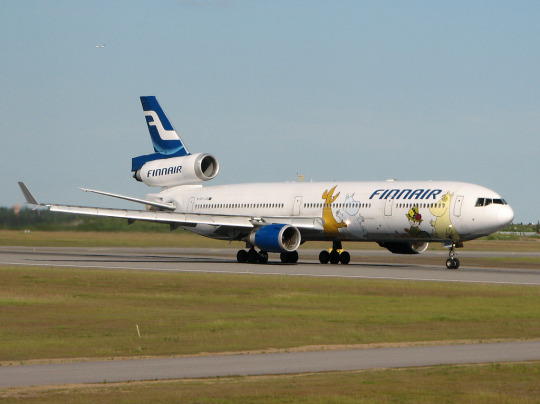
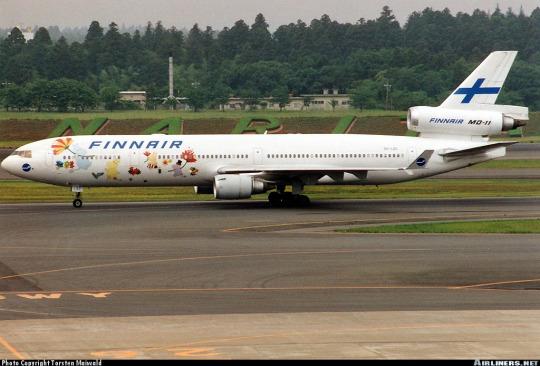
image on left: Antti Havukainen
In the 1990s, the airline first flew a Moomin jet. They had another in the 2000s. Both were withdrawn from service before 2010. It's been a while now since Finnair flew their last MD-11, but when celebrating their 100th birthday, a milestone that the vast majority of airlines will never see, they chose to do it by way of a soft Moomin embrace.
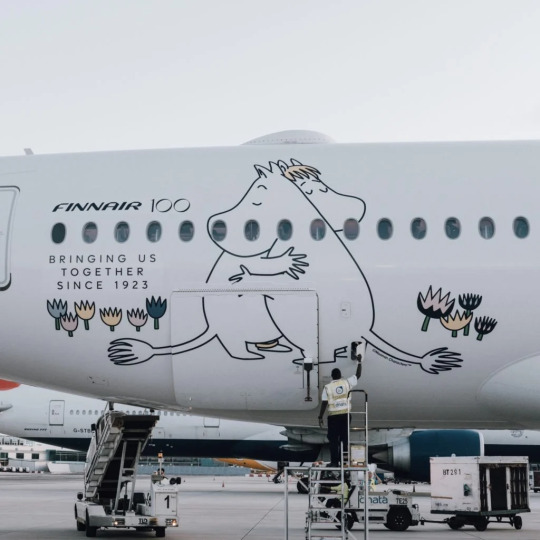
image: Changi Airport
And, I'll be honest, I think it's very sweet. It got an actual, sincere little smile out of me.
100 years is a really long time. In 1923 aviation was unrecognizable. What we would now consider an airliner didn't really exist yet - space for ten passengers, closed cockpits, and metal fuselages were the exceptions rather than the rule, and the Ford Trimotor was two years from its first flight. Cabin crew were barely even a concept. Airplanes, for all intents and purposes, were considered a type of boat. A nonstop flight across the Atlantic was a ridiculous concept. In a report published by the US National Bureau of Standards, it was said: 'there does not appear to be, at present, any prospect whatever that jet propulsion of the sort here considered will ever be of practical value, even for military purposes'. There were no aerodromes in Finland, so a small company called Aero attached floats to a plane just large enough for four passengers and took them from Helsinki to Tallinn.
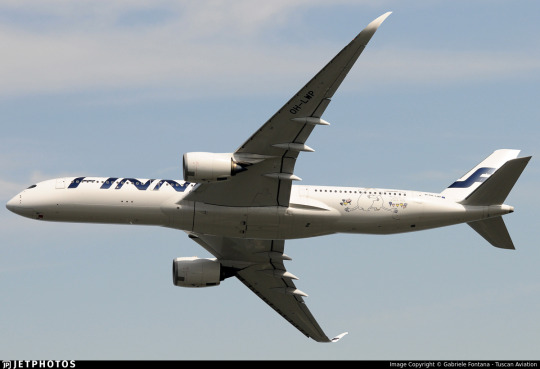
Look how far we've come.
Footnotes:
[1]: The Finnair website's history page, which I used as a source for much of the background and several images in this post, renders it as 'Finnish Air Lines', but on the airplanes themselves it clearly has no space, so I've corrected that seeming error for them. I don't know why this discrepancy exists, because as far as I know during this period they were marketing themselves as Aero so this text would only have existed on the livery itself. [2]: Actually, I very occasionally see this version where the F logo isn't fully surrounded by the circle and the F in the wordmark doesn't have the rounded top, and I don't know which came first or if the less round version is just somehow...not real? I did try to figure this out, I swear, but at some point I realized I am literally not a professional logo historian, and nobody is going to be let down if I don't brute-force an answer despite not even speaking Finnish, and I should finish writing the post before it's 2024. [3] The closest thing to an official source I can find is the descriptions of two listings for the centenary stamp including a quote from designer Ilkka Kärkkäinen attributing it to him. I don't at all doubt that he did design it, but I always like to find concrete attribution for things if I can and would hate to spread misinformation and the sparseness of confirmation here is something I find very strange. My best guess is that there's plenty of good sources on it in Finnish but nobody has bothered to make it as clear in English. [4] Admittedly this is a stretch, and I certainly don't think it was intentional, but it does remind me of the longship prow used in early SAS liveries. This motif was introduced in 1946 and continued to see use after the Finnair logo was introduced. The overlap is fairly limited in that SAS never used the longship in their logo (...I kind of want to talk about their logos one of these days) and the Finnair livery you'll see shortly doesn't look like SAS's at all, plus SAS has the extra pink on their liveries, but I couldn't get it out of my head that they do look sort of alike. [5] The absolute hero who uploaded it to jetphotos mentioned that Finnair had given him the photograph while planning to dispose of it, and this makes me wonder if the lack of documentation is just because Finnair doesn't hold onto their old materials, which makes me very sad. A lot of companies, more broadly, didn't bother to keep records until somewhat recently, but in Finnair's case it seems to be particularly egregious. As someone literally studying to be an archivist it makes me exceptionally sad to see history lost just because nobody cared enough to preserve it. [6] Maybe they didn't want to look like backwards SAS. Who can say?
#tarmac fashion week#finnair#grade: c#grade: d+#region: finland#grade: d#grade: d-#region: northern europe#era: 1960s#era: 1970s#era: 1980s#era: 1990s#era: 2000s#era: 2010s#era: 2020s#special liveries#commemorative liveries#requests
50 notes
·
View notes
Text

Bubblegum Crisis AIC 1987
#nostalgia#aesthetic#anime#anime gif#animanga#80s anime#retro anime#old anime#anime 80s#vintage anime#showa retro#1980s#showa era#1987#bubblegum crisis#bgc#oldtaku#cyberpunk#classic anime#nostalgic anime#retro anime aesthetic#retro anime style#80s anime aesthetic#80s anime style#kenichi sonoda#80s nostalgia#linna yamazaki#reika chang#train#light rail
1K notes
·
View notes
Text












Selections from Excellent Shop Designs - Store & Showroom by Shotenkenchiku-Sha (1989)
1. Bathroom showroom 'XSITE' - designed by Toshiyuki Tanaka
2-3. Jewelry & Clock Shop 'Tenshodo' - designed by Eiichi Fujii
4-5. OA Equipment Showroom 'Ricoh Oa Port' - designed by KID Associates
6. Optician Hogetsudo - designed by Shojiro Ninomiya
7-8. WaiWai Plaza - designer to be added
9. Tableware store 'Savoia Vivre' - designed by Kenjiro Tsuji
10. AV Station CSV Shibuya - designed Keiichi Irie
11. Green Bell multi-store - designer to be added
12. Showroom 'Texture' - designed by Setsuo Kitaoka, Kazuko Fujie, and Ryoichi Yokota
#design#interior design#interiors#architecture#colorful#80s#1980s#japan#bubble era#my scans#shop#retail#showroom
1K notes
·
View notes
Text

215 notes
·
View notes
Text

#1980s#michael jackson x reader#pop music#the jacksons era#tina turner#1970s#1978#applehead#michael jackson imagine#michael jackson oneshot#fine shyt#baddie nation#michael jackson#boyfriend material#my husband#he is the loml#mine#all mine
261 notes
·
View notes
Text
Axl Rose: Auctioned Journal, Lyrics and writings. [Transcript]

LYRICS:
They won't tell me what my daddy did My family says I had nightmares 'bout it most time I was a kid They tried to deny he could ever exist His brother called a short while ago Just to tell me he was dead No e' never amounted to much, Probably into stolen goods Though they say they got his killer They still ain't found his body But they'll give a call if someone should Maybe it's best if no one would I grew up gettin' beat as a child Brainwashed in a fanatical religion Spend my life outrunning' those memories Now it looks as if they're catchin' up with me I can't seem to do nothin' right Some days I can barely function My friends are growin' tired + they can't understand They're sick of my appetite for destruction Everyday with my woman brings it all back to me And it just it just won't come to an end This journey of a 1000 steps has lasted 27 years I never know when it'll happen again Ooh I'm torn apart inside You're gonna have to use imagination No one's ever wanted me to have a sense of pride
MARGINS
HELP ME PLEASE HELP ME I'VE ALREADY ASKED EVERYONE I KNOW FUCKING BLOODY HELP ME GODDAMMIT!!! AAAAAAARRRRRHHHHHHHHHHH!!!!!!!!! FUCK I AM SO SICK OF FUCKING EVERYTHING UP -- THIS ENDLESS SELF ANNALZING (sic) IS DRIVING ME ABSOLUTELY MAD I'VE GONE MAD (IT'S A) MAD MAD MAD MAD MAD WORLD
NOTE: This item was put up for auction in 2022 and is not believed to be apart of Erin Everly’s infamous 2013 collection.
#i hate posting this but its for archival purposes#dating based on 27 years of age/references to erin (woman)#axl rose#gnr#photo#transcript#gnr lies era#1980s#1989
150 notes
·
View notes
Text


MICHAEL JACKSON wins Favorite Soul Album for OFF THE WALL at the American Music Awards 1980 (02/∞)
#michael jackson#king of pop#off the wall#off the wall era#useranimusvox#throwbackblr#usermusic#tuserlauren#dailymusicians#blogmusicdaily#filmedit#celebedit#african american#userstream#usernarco#american music awards#award shows#80s#1980s#sequinedgifs
384 notes
·
View notes
Text
“what’s you’re fav era of Nikki sixx?” Is such a trick question because in EVERY era he is bad as fuck don’t care argue w/ the wall.







but I guess if i HAD to choose it would probably be either Girls Girls Girls or Dr. Feelgood. . .
#rock and roll#70s#80s#alternative#mötley crüe#Motley Crue#nikki sixx 80s#80s music#80s hair metal#80s rock#80s nostalgia#80s metal#1981#1983#1980s music#1985#1987#1989#too fast for love#TFFL#shout at the devil#theater of pain#girls girls girls#dr. feelgood#nikki sixx#i love nikki sixx#girl blogger#blog#blogger#nikki sixx eras
174 notes
·
View notes
Text



🍮🎀✩‧₊˚* ✩ 松田聖子 天国のキッス1983✩‧₊˚* ✩🍮🎀
#松田 聖子#かわいい#蒲池法子#⠀ 🎀 ⊹︵︵︵ ⊹ ୨୧ ⊹ ︵︵︵ ⊹ 🎀#🌸 ˚ ༘♡ ⋆。˚ㅤ 淡紅色 ㅤ ㅤ꒰ 🍮 ꒱ ⠀⠀⠀⠀イ. ₊ ˚ ׅ ㅤ🥐 。˚ ◟#ゆず#Matsuda Seiko#Seiko Matsuda#Kamachi Noriko#Noriko Kamachi#jpop#j-pop#dailyjidols#80s#1980s#90s#1990s#my gifs#gif#vintage#heisei#heisei era#aesthetic#kawaii#weebcore#webcore#neetcore#city pop
250 notes
·
View notes
Text

(aerobics gear + tab diet cola) x red corvette = 1984.
#vintage advertising#vintage ads#80s ads#80s advertising#the 80s#the 1980s#80s era#80s aesthetic#80s style#80s nostalgia#80s culture#80s commercials#tab diet cola#diet colas#tab#gifs
151 notes
·
View notes
Text










ten frames.
evil dead ii (1987) — dir. sam raimi
vfg31 horror film challenge: day 24 · supernatural
#evil dead 2#evil dead ii#movie log#october 2024 watch#10 frames#vfg31#genre: horror#genre: comedy#era: 1980s#country: usa#film screencaps#bruce campbell#sarah berry#dan hicks
25 notes
·
View notes
Text
No. 47 - MALÉV Hungarian Airlines

MALÉV Hungarian Airlines (Magyar Légiközlekedési Vállalat) was the flag carrier of Hungary until its dissolution in 2012. I'm excited to talk about MALÉV for a couple of reasons. I'll get into those later, when they come up, so let's cut off the preamble and talk about an airline sadly lost to recent history after 66 years in operation, leaving in its place...
Well, nothing, actually. Hungary no longer has a flag carrier, thanks to MALÉV's rather catastrophic end, and Budapest is now primarily served by ULCCs like Ryanair and Wizz Air. It's a very tragic thing, in my opinion, for a country to lose its flag carrier, and I hope that MALÉV, or something else to replace it, will be (re)established at some point, but for the moment it's a beautiful relic of a less financially tempestuous time.

MALÉV's legacy is well-kept, with the Budapest Aeropark open-air museum containing many more preserved aircraft than a lot of extinct airlines will see. Clearly, this airline was dear to a country.
While I never got to fly on MALÉV, I'm excited to cover this airline's eclectic little fleet, which does one thing I can't pretend for a moment doesn't immediately make me eager to discuss an airline:
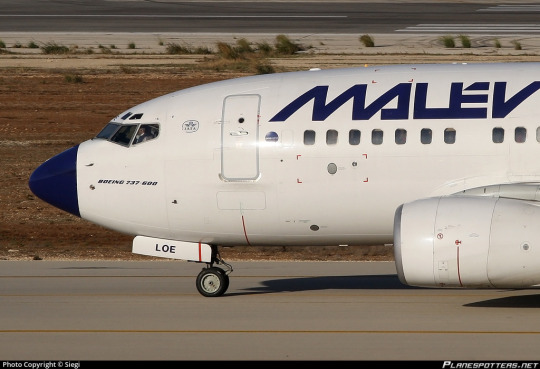
When MALÉV folded, Hungary lost a symbol of national pride, but the rest of us lost something too: one of the rapidly-dwindling number still fighting for the long-lost cause of the painted nose radome.
MALÉV was founded in 1946 as MASZOVLET (Magyar-Szovjet Polgári Légiforgalmi Rt.), born from the merger of a handful of similarly acronymic pre-war Hungarian airlines, plus the Hungarian branch of Aeroflot. It was renamed to MALÉV in 1954, when the Hungarian government bought out all the remaining Soviet involvement in the airline, making it a fully nationalized company. It was 'privatized' in 1993, but the majority of ownership was split between a government-owned holding company and the employees, with the government seemingly intent on privatizing it properly throughout. From 1999 to 2003 its CEO was actually József János Váradi, who is probably better known as the founder and CEO of Wizz Air. It was then sold to Russian airline-alliance-slash-joint-management-company AirBridge (later known as AiRUnion), a LATAM-without-rebranding-ish thing which existed for all of a couple years until it went under in 2008, all of its member airlines, classics like Domedovo and KrasAir also defunct. It was briefly under minority ownership by Vneshekonombank (now VEB.RF), a Russian corporation meant to invest in the development of urban infrastructure, but then renationalized by Hungary. During this period of privatization it underwent an elaborate game of CEO musical chairs, broadly struggling and being subsidized heavily by the Hungarian government. Once this happened the EU ruled that said state aid was actually illegal, and forced MALÉV to repay the years of assistance which had kept it above water - which of course promptly killed it, being more than a year of its revenue.
I dislike this pretty broadly. I'm actually of the opinion that flag carriers shouldn't be privatized at all, and it feels like it frequently makes things immediately and dramatically worse. This isn't really the place for pontification, but MALEV's downfall makes me genuinely sad. It feels almost vindictive in its drama and suddenness, and it killed something legitimately important to both infrastructure and national identity. (Also, I find it hard to wrap my head around the government's determination to privatize MALÉV when they ended up pouring so much money into it anyway.)
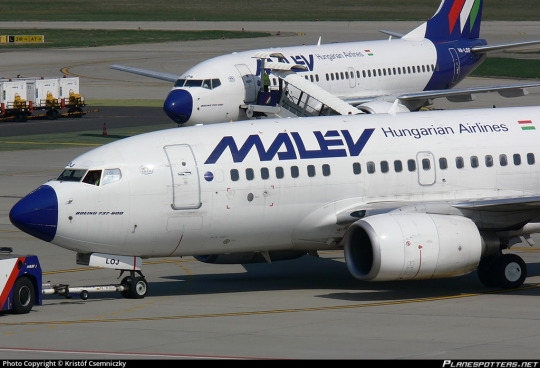
While other airlines eventually picked up the slack, in the immediate aftermath traffic at Budapest Liszt Ferenc International Airport immediately and drastically dropped, and now the only real choices, in a lot of cases, are Wizz Air and Ryanair. Which is broadly fine, I mean, I frequently can't afford anything else, but it's a bit uninspiring for the only option. It's just outright depressing when two airlines operate the vast majority of flights at any airport, with barely any other airlines offering even three, and those two airlines are Ryanair and Wizz Air, especially when you're just smack in the middle of Europe the way Hungary is and are a pretty easy place to route flights through. Increased range on airplanes is obviously a huge benefit to many people, but I'm getting the sense it may have been a cruel joke the universe saw fit to play on Hungarians.

There are three rows of Wizz Air destinations cut off, by the way.
But, okay, enough of that. I'm here for the livery. MALÉV has had three-ish main liveries, from their early days flying the Lisunov Li-2 (a Soviet license-built DC-3) all the way up to their final shuttering.

Yes, that's right - HA-LIX "Kármán Tódor" is in fact an airworthy Li-2![1]
I'm trying to keep my posts at a length that is manageable to both write and read, so I won't be fully covering all the MALÉV liveries. I'm going to assume any requests are for the most up-to-date version unless specified otherwise. But I do just need to mention that I really want to do a follow-up post on MALÉV's original livery, which I think is a standout from its era - just brushing over it in a general history summary doesn't do it justice. It's modeled below on the Ilyushin Il-14 registered HA-MAL, preserved at Aeropark, while the 1968-1986 livery is modeled on this period photograph of Tupolev Tu-134A HA-LBG.
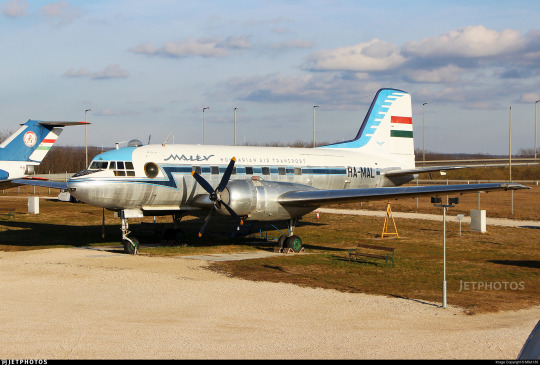

This is another reason I'm very excited by the MALÉV request. Hungary was, if you will, the sort of country which purchased Tupolev airliners, which means I get to use pictures of and talk about old Soviet models! MALÉV began switching to Western planes in the 80s and withdrew their last Tu-154s in the early 2000s, so they're not necessarily the majority of examples, but I do sort of favor the Tupolevs when I can. They're just very idiosyncratic for someone used to looking at mostly Western aircraft, which is to say basically anyone born in the 90s or later. HA-LBG is a Tu-134A, which you can tell because of the glazed nose. Why the glazed nose? Well, that's the classic Soviet navigator pit!
Unfortunately, the later MALÉV Tu-134s had modern nose radomes, visually indistinct from the fuselage around them. Thankfully, I am finally getting to the actual subject of the damned post, which is that in their last-ever livery, designed by László Zsótér[2] and introduced in 1986, MALÉV remembered where they came from and decided they were going to bring back a trend that should never have gone away.

Why did airlines stop painting the noses of their planes? That's a rhetorical question, they stopped doing it because technology had improved to the point they could use other colors on the radome without interfering with the weather radar's function, but, like, why did they stop doing it? Just look at this. The painted nose adds to a feeling of weight and forward momentum, and now the plane looks like a shuttlecock being launched directly at your face during a game of badminton against someone who dislikes you and is sincerely trying to cause you physical injury. She looks like a throwing dart for giants.

Or like a crayon, maybe, also for giants, especially with the stubbier 737 models MALÉV liked to use. The dark color is also very distinctly beaklike.
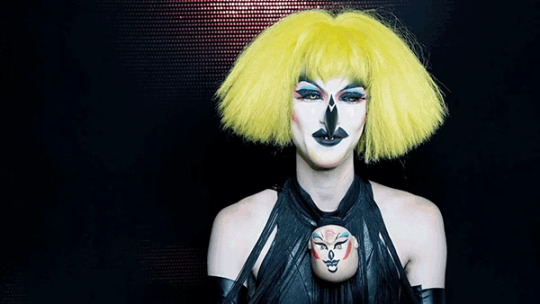
For some reason, it really immediately and vividly reminds me of the signature beak thing the drag queen Abhora (of Dragula fame) does. I absolutely love it in both cases, though thankfully to the best of my knowledge MALÉV did not embody horror, filth, and glamor.

It does, however, create quite a startling effect via the contrast between white and near-black blue. I will say that this color scheme makes the plane look a bit...villainous? I like that a lot because I'm twisted in the head. The thing that comes to mind is that this plane is haglike. And I love that for her. But I get that this statement could potentially read as insulting, so just, you know, I do mean it as a compliment. I like that she's a hag. I mean, I'm a Siouxsie and the Banshees fan, I'm no stranger to the power of big dark blocks[3].
I think the choice in color here is absolutely fascinating. You see, the Hungarian flag looks like this.

For a regular three-stripe flag I quite like Hungary's dustier take on the archetype, but we can't get around the fact that green, red, and white is an incredibly common combination. Probably in large part due to this, these are also some of the most oversaturated colors in livery design.

Here are just some of the examples that came to mind - and that's not including similar but not identical schemes[5]. These color schemes can obviously still work (two of these liveries are among my favorite examples of Eurowhite done Euro-right, guess which!) but I think MALÉV made the right choice in not trying to compete with it.
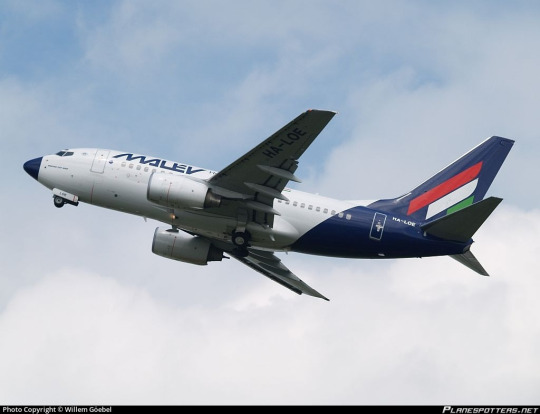
It's kind of interesting, though, how instead of just rejecting it altogether (as Mexican flag carrier Aeroméxico has done, as just one example) they picked a very dark off-black shade but then incorporated the colors of the Hungarian flag. This could very easily have gone phenomenally bad but I think it worked for them. It draws interest to the tail (while the blue background keeps it from being detached), the angular use of lines goes with the similar sharpness of the wordmark, and the muted shades Hungary in particular has to work with suit the generally washed-out scheme of this livery.
And to be clear, I don't mean washed-out as an insult. You could easily be fooled into thinking I dislike desaturation based on my reviews here, but I actually really love it and my main long-term non-Runway-Runway project has stylized desaturation as a core feature of its style guide, so to speak. So let me talk about desaturation! The reason desaturation is so frequently ugly is that people use desaturated colors the same way they would use vivid ones and expect it to get the same result, which it obviously won't. The most important thing for use of desaturated colors, in my own opinion, is maintaining very strong contrast. MALÉV does this, obviously, and the flag honestly lends itself to this via the white stripe's placement in the middle, and to a lesser extent the placement of these colors to break up the dark tail. Interesting designs can be subtle, but minimalism only works when it is an active choice designed to create an impression of minimalism (Vietnam Airlines) rather than a blank space (Lufthansa).
The more similar in hue and brightness to each other desaturated colors are, the more the entire thing starts to look flat. MALÉV avoids this by using green, red, blue, and white, which are completely distinct colors. It also creates a certain staccato impression via the sectioning off of the nose, the sharp lines of the wordmark, and the just-as-sharp lines of the tail. This is the point where I have to bring up that this livery was designed for, in large part, Tu-134s and Tu-154s, and these planes are themselves very visually sharp. While they have a very streamlined appearance without question, their planform actually, to me, suits the style of MALÉV's livery better than some of the other types they used, and may explain a bit more why it was designed how it was.

The wing sweep on the Tu-134 is 35 degrees, which is very unusually aggressive even for a rear-engined t-tail plane. I find that the less swept an airplane's wing is, the less it breaks up the line of the fuselage. The Tu-134 is also a bit of a short-looking plane, vertically, relative to a lot of other models, and the straight downward line blocks off the very square tail quite nicely behind the engines, which add some visual interest where they overlap. This sort of scheme looks pretty alright on the Tu-134, even if I think it could use a bit of an adjustment to the wordmark - make it larger, or maybe add an accent color. That would add a bit more weight to the front of the plane.
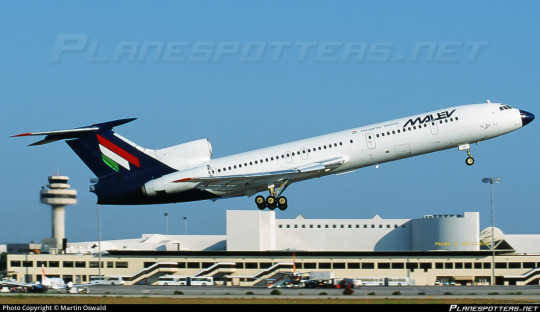
Unfortunately, on a somewhat longer-looking plane like the Tu-154 the white fuselage expanse becomes quite a bit more stark. That staggering just isn't enough to avoid the desolate feeling.


It gets even worse with modern Western planes, which lack the almost violent wing sweep, sharpness, and short fuselage of the Tu-134. MALÉV operated both the 767 and the 737-800, and these just don't have enough visual interest in the center to keep the plane from being a big white sausage. Plus, Boeing noses are pointy, but they're not as pointy as Tupolev noses, which means the nose paint covers less space. This is nearing the Lufthansa Line, which is my new term for the point where a plane has so little happening anywhere except the back that it looks distinctly rear-heavy.
(As well as crossing the Lufthansa Line as a sort of event horizon, the 'Lufthansa Line' can also refer to the literal shape of the straight line downwards. The similar practice which utilizes a curve instead of a straight line is the Lufthansa Line, SAS Variation. The Lufthansa Dec-lined - no, I'll stop. I need to maintain a tiny bit of dignity so I can still make fun of jetBlue without being a hypocrite.)

Like most liveries which straddle or cross the Lufthansa Line, this looks completely fine and proportional on a plane which is sufficiently short and/or stubby to reduce the ratio of rear to full body to around one-third, and the more stretch you add the worse it looks.

A short-looking fuselage like that of the Q400 also mitigates the effect a little. Plus, they do something I keep telling operators of planes with this sort of square tail to do - extend the paint to more of the fuselage, rather than keeping it a straight line. It just unfortunately isn't quite enough, though the pointy nose, shortness, and slight extension definitely mitigates the effect enough that I think it's...very nearly acceptable.
The incredible thing is that MALÉV actually solves this problem!

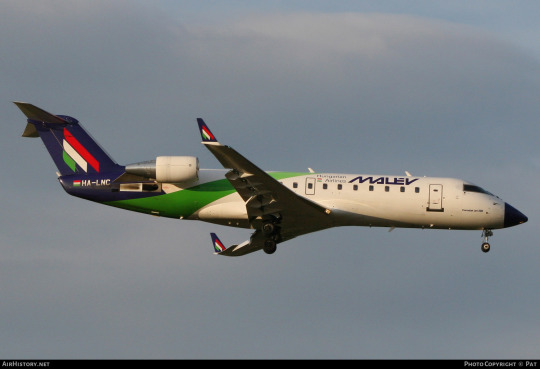
I love this little green swoosh upwards. Now, I think I would have chosen a different color for it - either a slightly lighter blue or maybe a darker green. I like how it tapers and fades towards the top. I like how it overlaps the bottom of the main blue section. I think it basically entirely solves the problem in an elegant way.

Unfortunately, this feature was used only on the CRJ-200 fleet. The CRJ is already a plane that's on the Lufthansa-proof side, particularly the shortest -200 variant, so it's a shame we didn't get to see this do some real legwork on a model that desperately needed it. Still, I think that Lufthansesque design could take notes from this, as it basically solves their issue! I don't get why this isn't something you see done. It's such a simple but satisfactory solution. Why, why did MALÉV not generalize this to their other planes?
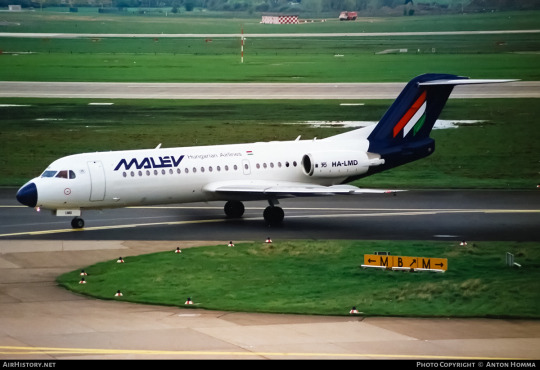
Wrapping up my thoughts is the most challenging part of this. Normally I try to judge liveries by their weakest link - Lufthansa or TAM don't get let off because their liveries look better on short planes. But there's enough about the design choices that were made by MALÉV that I keep resisting tossing them into that same pit.
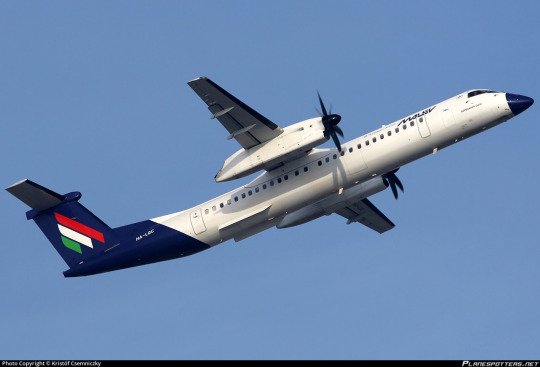
Nothing about MALÉV's livery really changes things drastically enough that it fundamentally deviates from the Lufthansa Line archetype, but it feels like the tiny tweaks change just enough that I actually think it's pretty okay. The painted nose, in particular, does a lot for me. I can't help but wonder if I'm being too kind to MALÉV because they operated so many pointy, angular, square airframes that really prevent the weaknesses of the Lufthansa Line from showing, and I try not to judge based on mitigating airframe factors if the airline operates types that aren't so lucky, but I just can't help but think the nose does add something very tangible, a sense of forward motion and a feeling of character that makes me hate it distinctly less, and the color choices are also nice!

And it's this feeling of character that keeps me...not really disliking this livery even though I will freely acknowledge it's lacking. There's something compelling accomplished just by painting the nose. I almost find that bizarre.

But, honestly...mostly white or not, I think these planes have enough color to them at the tarmac at Budapest wouldn't seem completely desolate. I think they'd go well with Wizz Air too. So, I mean...I think ultimately I like MALÉV, yes.
I'm going to give them a C+.
I can't justify going higher than that. But the main impression I've taken away is that I really wish MALÉV got a chance to overhaul their livery for the 2020s. What they had in their final phase actually looks quite contemporary, but that's because it was played out before it became an actual trend - introduced 1986, it predates even FedEx. I definitely can't rule out that whatever they redesigned this into would be worse, but as long as they kept the painted nose that's at least one thing I like a lot.

I've heard the Hungarian government would like to someday resurrect MALÉV if finances allow. To be clear, I do mean that I've heard it secondhand, but I can't find the actual source on it. This may be because I don't read Hungarian, but I think it would be nice to see. Even if there's a fifteen or even twenty-year gap, that's a better thing to see for a legacy which spans three-quarters of a century than for it to end there, and it's about time Hungary had a flag carrier again.
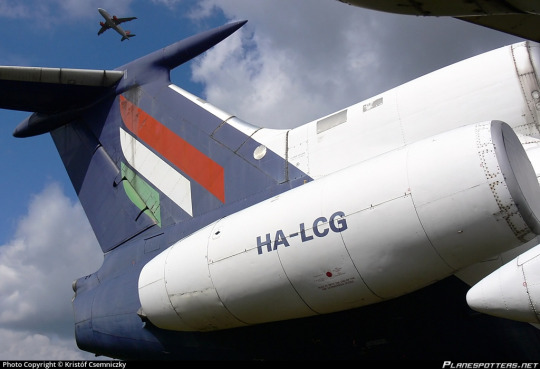
―――――――――――――――――――――――――――――――
Footnotes are so fantastic and useful. Why haven't I been using footnotes until now? I digress so much, why haven't I been making my posts more legible? I mean, tumblr unfortunately doesn't let you link to part of a post so they're not as useful as they are on other websites, but, like, no worse than endnotes in a book, right? And I deal with those all the time with very little grumbling.
[1] You can even still take a sightseeing flight on HA-LIX, or see her at airshows, where she looks fantastic for her 74 years of age (built 1949). She is operated by the Goldtimer Foundation on behalf of her owners, the Hadtörténeti Museum, still wearing the livery of her former operator, MALÉV. She even just got a round of restoration in early 2022, and is potentially the only airworthy Li-2 in the entire world of over 5,000 built, as it's thought the only other recent user, the North Korean Air Force, has mothballed theirs. [2]: I saw multiple mentions of László Zsótér as the designer of this livery, but cannot find any mention of whether he worked for an outside agency or was in-house at MALÉV. [3]: I mean, when you think about it, all of MALÉV's airplanes are painted birds. [4]: ie, schemes that are also primarily red and green but include other color(s) like blue, yellow, or black - see Ethiopian Airlines or MEA for an example - as well as honestly color schemes that are just red and white or green and white. It's honestly as bad as red, white, and blue.
#tarmac fashion week#grade: c+#region: central europe#region: hungary#malév hungarian airlines#flag carriers#defunct carriers#requests#era: 1960s#era: 1940s#era: 1950s#era: 1970s#era: 1980s#era: 1990s#era: 2000s#era: 2010s#region: soviet bloc#lufthansa line
13 notes
·
View notes
Text

Bubblegum Crisis AIC 1987
#nostalgia#aesthetic#anime#anime gif#animanga#80s anime#retro anime#old anime#anime 80s#vintage anime#showa retro#1980s#showa era#1987#bubblegum crisis#bgc#oldtaku#cyberpunk#classic anime#nostalgic anime#retro anime aesthetic#retro anime style#80s anime aesthetic#80s anime style#kenichi sonoda#80s nostalgia#ad police#gif#motorcycle
280 notes
·
View notes
Text





If this town is just an apple, then let me take a bite
180 notes
·
View notes
Text






Michael Jackson receiving a plaque with his name on the Gardner Elementary School auditorium in Los Angeles, California (October 11, 1989)
143 notes
·
View notes